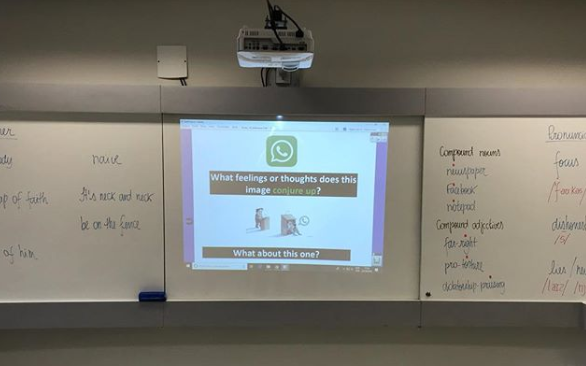If you follow me on Instagram, you might have seen the photo below. It shows the board work of a lesson I taught yesterday, based on an article from the Guardian describing the WhatsApp scandal in the Brazilian presidential elections.
It’s unlikely this lesson is for you if you don’t live in Brazil, but enough of my friends showed interest in it that I decided to make a quick post for it.
Thi, Eduardo, Gustavo and Ana, this one is for you 🙂
